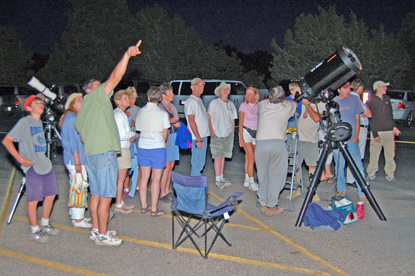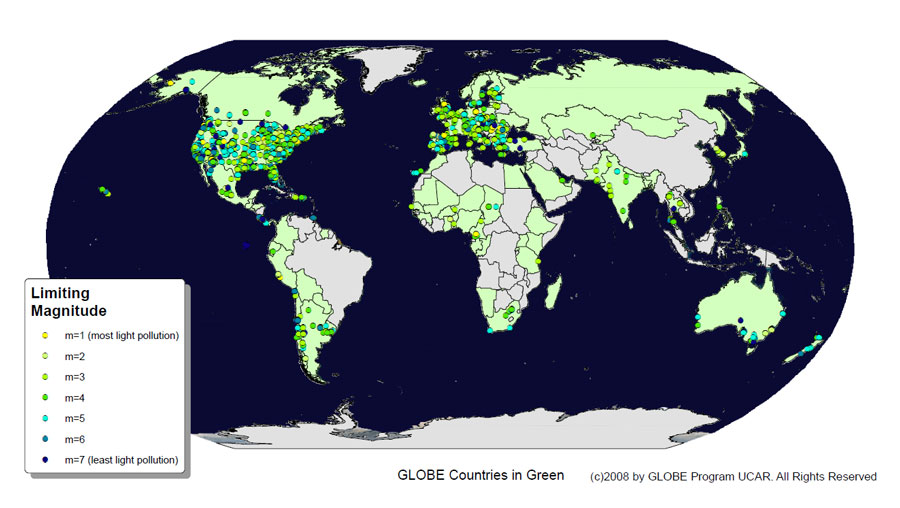
Grand Canyon Association photo by Ron Short
An astronomer points out visible objects in the night sky.
Date: May 25, 2011
Contact: Shannan Marcak, 928-638-7958
Grand Canyon, AZ - The twenty-first annual Grand Canyon Star Party will be held from Saturday, June 18 through Saturday, June 25, 2011 on the South and North Rims of Grand Canyon National Park. This event is sponsored by the National Park Service, the Tucson Amateur Astronomy Association (South Rim), and the Saguaro Astronomy Club of Phoenix (North Rim), with funding from Grand Canyon Association.
Amateur astronomers from across the country will volunteer their expertise. Free slide programs will be offered; and numerous telescopes will be set up to view planets, star clusters, nebulae, and galaxies at night and to view the sun by day. National parks such as Grand Canyon are protective harbors for some of the last remaining dark skies in this country. Weather permitting, expect spectacular views of the universe!
On the South Rim, events include a slide show nightly at 8:10 p.m. in the theater of the Grand Canyon Visitor Center.The slide show will be followed by free telescope viewing behind the building. To guarantee a seat at the slide show, arrive a few minutes early. Telescope viewing continues well into the night; visitors may arrive anytime after dark.
Parking for the South Rim Star Party is available in lots 1 through 4, or visitors may arrive by the free Village Route shuttle bus, which runs until 11 p.m. Visitors will need a flashlight for the walk to the viewing area, but are asked to keep flashlights pointed down to protect everyone's night vision.A red flashlight is best, and can be made by covering any flashlight with red cellophane, nail polish, or magic marker.
On the North Rim, telescopes will be set up on the porch of the Grand Canyon Lodge every evening. Check the Visitor Center and park bulletin boards for additional daytime and evening events.
Nighttime temperatures on both rims can be quite cool, even in summer. Those attending the star party are encouraged to bring warm layers of clothing.
When traveling in the park on the South Rim, it is best to find a parking space and use the free shuttle bus system to access points of interest in the Grand Canyon Village area. See the Park Guide for tour bus routes and schedules. If you plan to stay overnight at Grand Canyon National Park, plan your visit well in advance. Visit our official website at www.nps.gov/grca, or to receive a free Grand Canyon Trip Planner, call (928) 638-7888.
To learn more about the Grand Canyon Star Parties, please visit our web site at http://www.nps.gov/grca/planyourvisit/grand-canyon-star-party.htm. For additional information on the South Rim Star Party, contact Marker Marshall at (928) 638-7830. For more on the North Rim Star Party, contact Robin Tellis at (928) 638-7739.


 I do remember seeing that in the U.S., the area with the combination of cleanest air and lowest light pollution was somewhere in southeastern Utah.
I do remember seeing that in the U.S., the area with the combination of cleanest air and lowest light pollution was somewhere in southeastern Utah.

